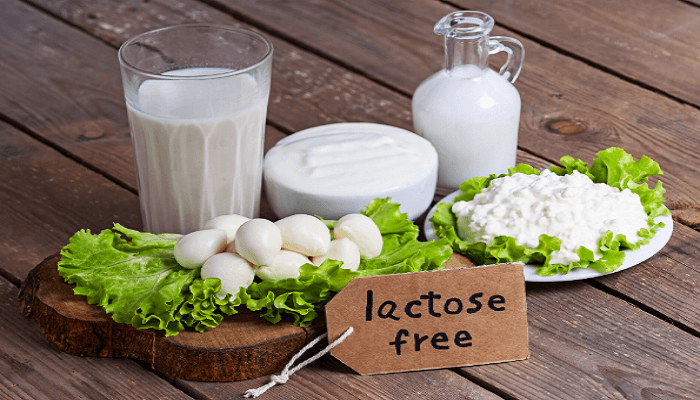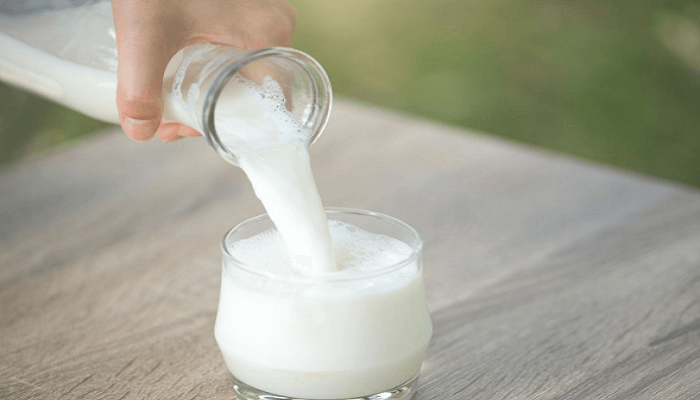Why is Lactose Free Milk So Expensive – Lactose-free milk has become an increasingly popular alternative to traditional milk for those who are lactose intolerant.
One of the most common questions people ask is why lactose-free milk is so expensive compared to regular milk. In this article, we will explore the reasons why lactose-free milk is more expensive and what factors contribute to its high cost.
What is Lactose Free Milk?

Lactose-free milk is a type of milk that has had lactose removed from it, either through a natural process or by adding lactase, which is an enzyme that breaks down lactose.
Lactose is a natural sugar found in milk and other dairy products, and some people are unable to digest it properly.
These individuals are known as lactose intolerant, and consuming lactose-containing products can cause gastrointestinal discomforts, such as bloating, gas, and diarrhea.
Lactose-free milk is a good alternative for those who are lactose intolerant but still want to consume milk and its nutritional benefits.
It has a similar taste and texture to regular milk and can be used in the same way, such as in cooking or baking.
Lactose-free milk is also available in various types, such as whole, skim, and flavored varieties, and can be found in most grocery stores.
Why is Lactose Free Milk So Expensive

Smaller Market and Production Volume
The market for lactose-free milk is smaller than that for regular milk. Lactose intolerance affects only about 65% of the world’s population, and only a portion of those individuals are aware of or choose to consume lactose-free milk.
As a result, the demand for lactose-free milk is lower than for regular milk, and production volume is lower. The lower demand and production volume mean that the fixed costs of producing lactose-free milk are spread over a smaller volume, making the unit cost higher.
Additional Processing Steps
Producing lactose-free milk requires additional processing steps. The lactose in regular milk must be broken down into its constituent parts, glucose, and galactose, using the enzyme lactase.
This process can be done naturally by allowing the milk to sit for an extended period, or it can be done by adding lactase to the milk.
Either way, this additional processing step adds cost to the production process, which is reflected in the higher cost of lactose-free milk.
Higher Raw Material Cost
The raw materials used to produce lactose-free milk are also more expensive than those used for regular milk.
The lactase enzyme used to break down lactose is expensive to produce and must be added to the milk in the correct quantity to ensure that all of the lactose is broken down.
Lactose-free milk may be made from higher-quality milk, which can be more expensive.
Special Packaging Requirements
Lactose-free milk often requires special packaging to ensure that it stays fresh longer. The lactose-free milk market is dominated by ultra-high-temperature (UHT) processing, which involves heating the milk to a high temperature for a short period to kill bacteria and other microorganisms.
The milk is then packaged in special cartons that are designed to keep the milk fresh for an extended period without the need for refrigeration.
These cartons are more expensive than traditional milk cartons and add to the overall cost of producing lactose-free milk.
Marketing and Advertising Costs
Lactose-free milk is a niche product that requires significant marketing and advertising to increase consumer awareness and promote its benefits.
The cost of marketing and advertising lactose-free milk is significant, and these costs are passed on to the consumer in the form of a higher price.
Higher Margins
Finally, lactose-free milk is often priced higher because it offers higher margins for retailers and manufacturers.
Lactose-free milk is a specialty product that can command a higher price, and manufacturers and retailers are willing to charge more for it because they know that people who require lactose-free milk will pay a premium for it.
Is Lactose-Free Milk Healthier Than Regular Milk?

Lactose-free milk and regular milk have similar nutritional content, so they can both be part of a healthy diet.
Lactose-free milk has the same amount of protein, calcium, and vitamins as regular milk, but with the lactose removed.
However, it is important to note that some lactose-free milk products may contain added sugar or flavorings, which can increase their calorie content.
It is always best to check the label and choose lactose-free milk products that are unsweetened and unflavored to ensure that you are not consuming excess sugar or other additives.
While lactose-free milk may be a good option for those who are lactose intolerant, it is not necessary for those who are able to tolerate lactose.
Regular milk can be a healthy part of a balanced diet and can provide important nutrients like calcium and vitamin D.
Lactose-free milk is not necessarily healthier than regular milk, but it can be a good alternative for those who are lactose intolerant or have difficulty digesting lactose.
What is The Disadvantage Of Lactose-free Milk?

While lactose-free milk can be a good option for those who are lactose intolerant or have difficulty digesting lactose, there are a few potential disadvantages to consider.
Firstly, lactose-free milk can be more expensive than regular milk. This is because the process of removing lactose or adding lactase to the milk can be costly, and this cost is often passed on to the consumer.
However, the exact price difference will depend on the brand and location.
Secondly, some people may find that lactose-free milk has a slightly different taste or texture compared to regular milk.
This can be a matter of personal preference, but some individuals may not enjoy the taste as much as regular milk.
Thirdly, while lactose-free milk does not contain lactose, it still contains milk proteins. This means that individuals who have a milk allergy or are sensitive to milk proteins may still experience symptoms such as skin rashes, hives, or difficulty breathing when consuming lactose-free milk.
Lastly, it is worth noting that lactose-free milk may not be necessary for everyone. Many people are able to digest lactose without issue, and consuming regular milk can provide important nutrients such as calcium and vitamin D.
It is always best to consult with a healthcare professional if you are unsure whether or not lactose-free milk is necessary for your specific dietary needs.
Lactose-free milk can be a good alternative for those who are lactose intolerant or have difficulty digesting lactose, but it is important to consider the potential disadvantages and choose the right milk for your individual needs.
Conclusion: Why is Lactose Free Milk So Expensive
In summary, there are several reasons why lactose-free milk is more expensive than regular milk. These include the smaller market and production volume, additional processing steps, higher raw material costs, special packaging requirements, marketing and advertising costs, and higher margins.
Despite its higher cost, lactose-free milk offers an important alternative for those who are lactose intolerant and provides a means for them to enjoy the nutritional benefits of milk.
As consumer demand for lactose-free milk continues to grow, it is possible that prices will become more competitive, but for now, the higher cost of lactose-free milk is a reflection of the additional costs associated with producing and marketing this specialty product.